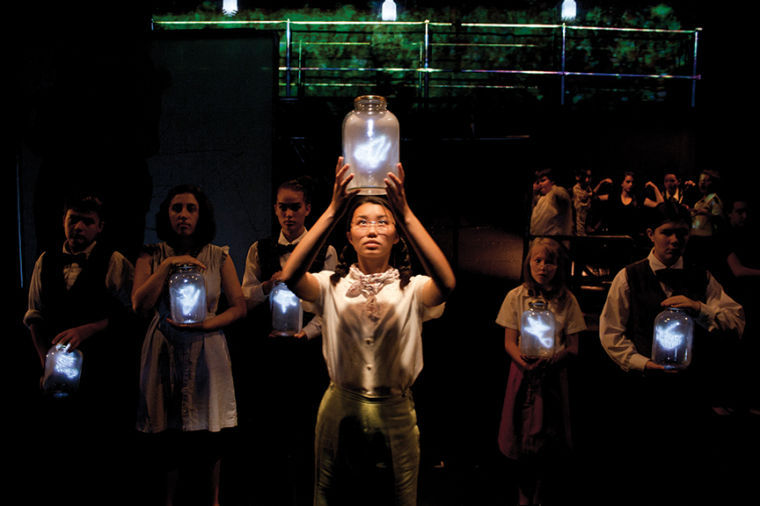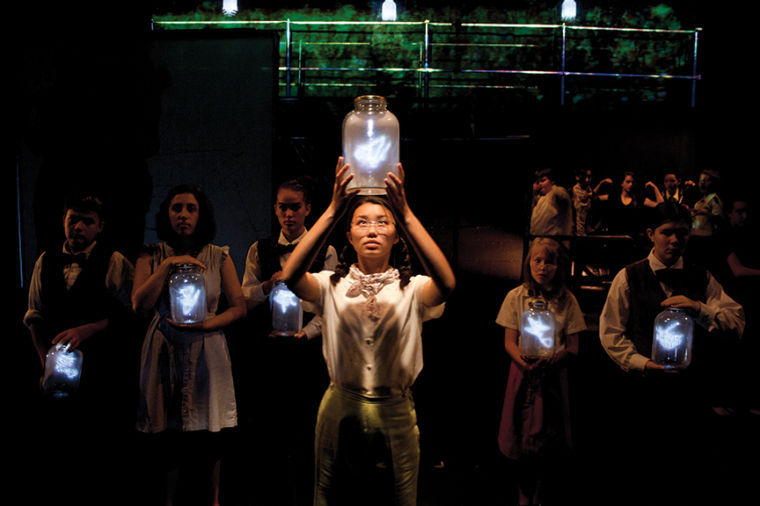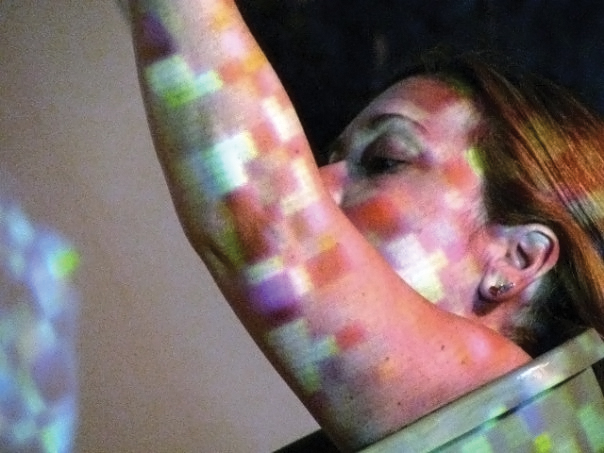With the allure of 3D and IMAX movies, it can be hard for stage productions to compete for the short attention spans of today’s audiences.
But as technology has evolved, so has theater. Two new classes aimed at producing stunning multimedia theater productions are now part of the theatre department curriculum. THET 399D — Independent Study: Media Design and THET 669D — Independent Study: Advanced Media Design II, taught by visiting professor Jared Mezzocchi, were launched last semester and became immediately popular with students through delving into the art of projection and multimedia theater, and the science behind the software that makes it all happen.
When it’s done well, the projection becomes another actor on the stage, said Mezzocchi, who has headed multimedia directing and design for 16 productions since 2009.
This aspect of interactivity, which is so new to multimedia theater, is what makes projection design so cutting-edge, said Misha Kachman, undergraduate theatre studies director.
“This is a thing of the future,” he said. “It is really important that we offer curriculum in this area.”
One of the ways Mezzocchi does this is by familiarizing students with a program called Isadora, an interactive-media software designed to be simple to use regardless of whether a person is computer-savvy. Through Isadora, students can create their own content, project it onto the set of a production and manipulate the image during a show, creating the theatrical sensation known as projection design.
The software itself has been around for many years, but projection design is relatively new to the performing arts and has recently evolved into a more sophisticated element of theater. Projections were formerly used solely as backdrops, but with more advanced technology, they can become interactive, said Sarah Tundermann, projection designer for In Time of Roses, which will debut at the Clarice Smith Performing Arts Center on April 26. Previously a lighting designer, she said, this will be her first show using projection design in a major way.
Projections are made with film footage and still images that designers have either produced or collected, then fed through filters or altered with special effects using Isadora. Users can project the content onto anything, from a flat background to a three-dimensional set, or even the actors themselves. During a performance, projection designers operate from behind the scenes, making the images work in tandem with the action of the play, said Shane O’Loughlin, a senior theatre major.
The classes in projection design have been popular so far — Media Design’s eight seats are full. Though the courses are technically reserved for theatre majors, Kachman said any student can enroll in the class after an interview process.
This semester, Mezzocchi is teaching both courses again, as well as a graduate class in media design and editing. He hopes to expand the projection design program at this university and devote more attention to teaching students how to use the art form to enhance storytelling.
Projection designers must be careful not to let their flashy multimedia tricks distract from the story of the play, which is the most important aspect of theater, Mezzocchi said.
“[Projection design] should be more magical as opposed to a gimmick,” he said. “I hope that we know what we are able to do, and just make educated ensemble-based choices with it.”
To avoid misusing the tool, designers should not replace a physical set with a projection for the sole purpose of showing off, said Daniel Conway, head of theater design.
“People who are using projection design use it best when it is an integral part of the story and when it responds to the actors,” he said.
Projection design is also economical, allowing the designer to do a lot on a budget, said Conway. Since the theatre department already has most of the necessary hardware, such as computers and projectors, the only added expense is a licensing fee for Isadora, which amounts to a one-time cost of about $500, Tundermann said.
For O’Loughlin, who took Mezzocchi’s media design class in the fall, learning about projection design shifted his focus from just acting to becoming more involved with the composition of a production.
“It dramatically changed what I want to do,” he said. “It opened up an entire new aspect of theater that wasn’t accessible before.”
As for the future of projection design, no one can be quite sure where it is headed. Mezzocchi hopes it will “calm down, and find its way into better storytelling.”
Though O’Loughlin doesn’t think theater is in danger of disappearing, he said it will help the art form not only stay relevant, but thrive.
“I think opening the world of theater to the digital world is an enormous step, something that is going to make theater phenomenal again.”
Multimedia theater and the art of projection are emerging forms of theater production that are taking hold at this university. Above is a photo from the play The BFG, which visiting professor Jared Mezzocchi designed. Projections should enhance storytelling, not distract from it, he said.
Projections by Jarred Mezzocchi featured in the 2010 production The B Cam





